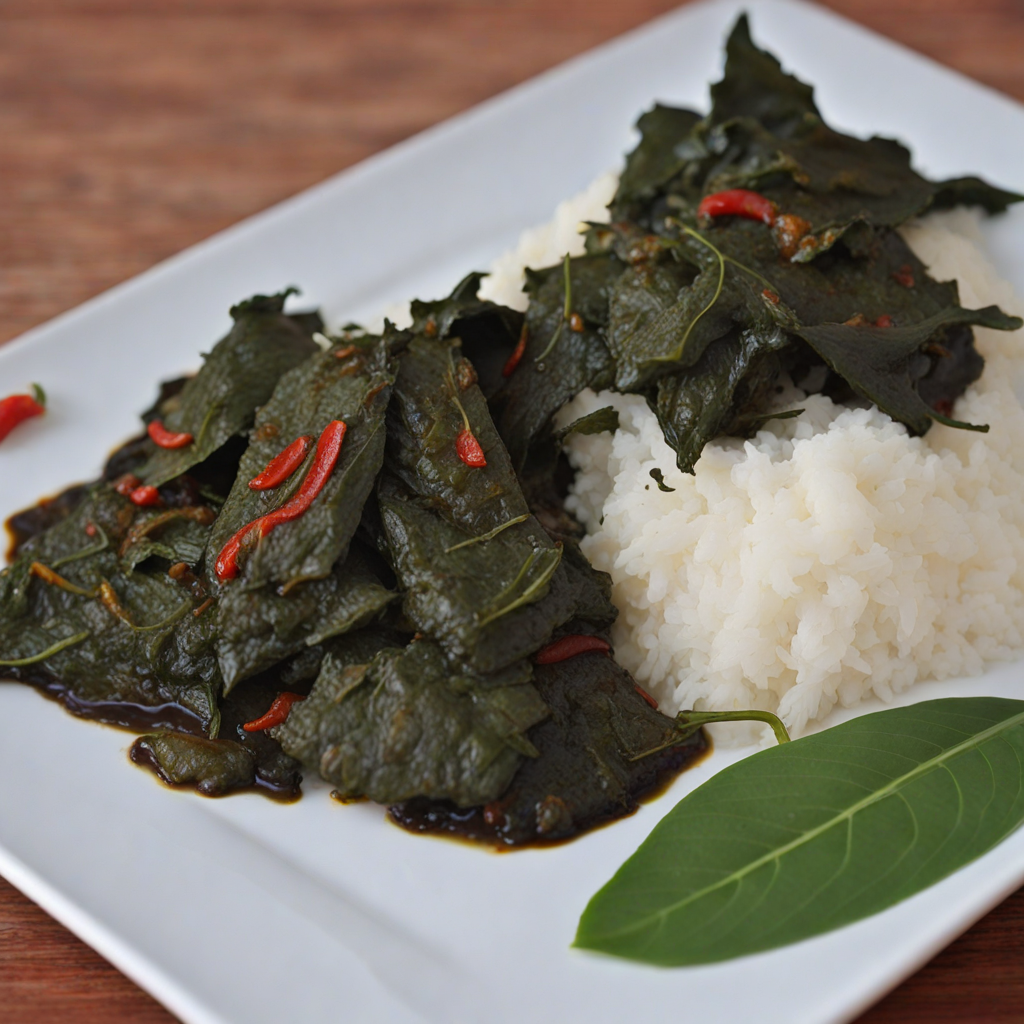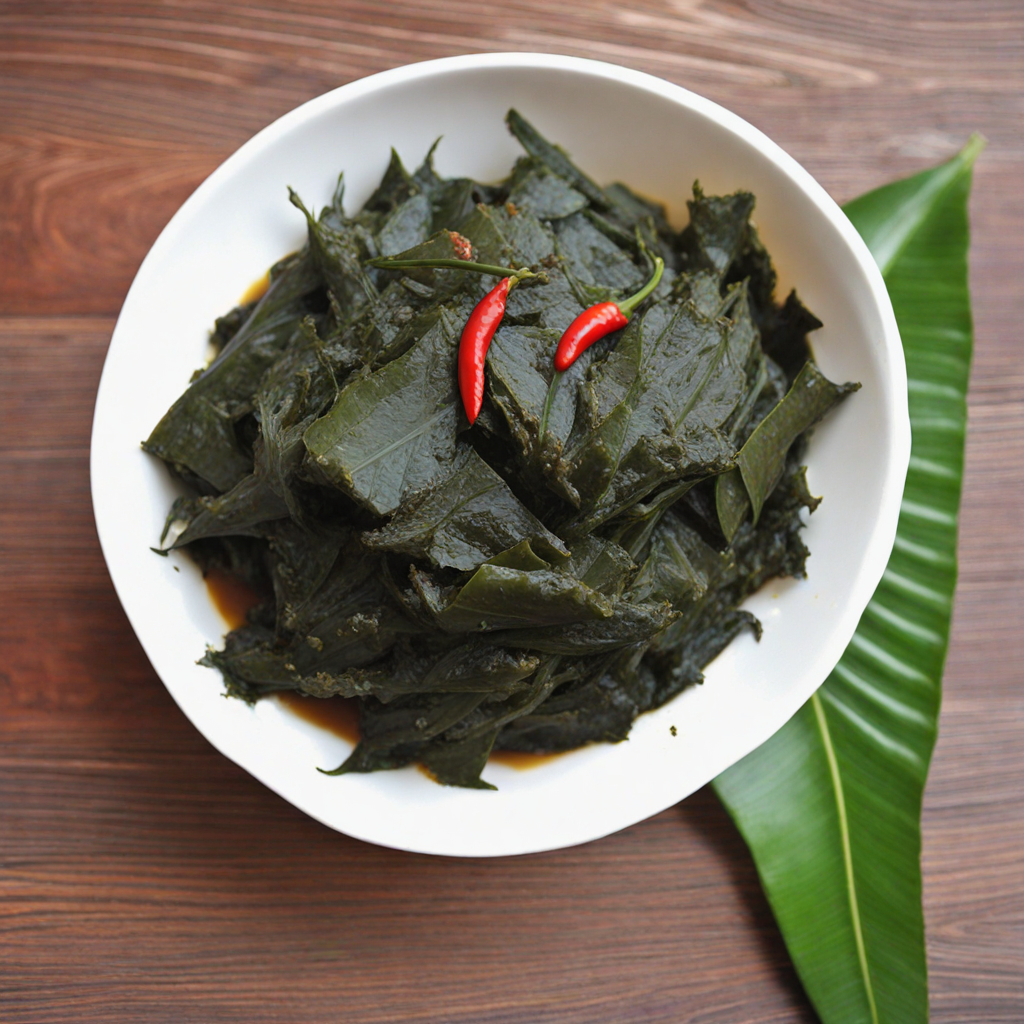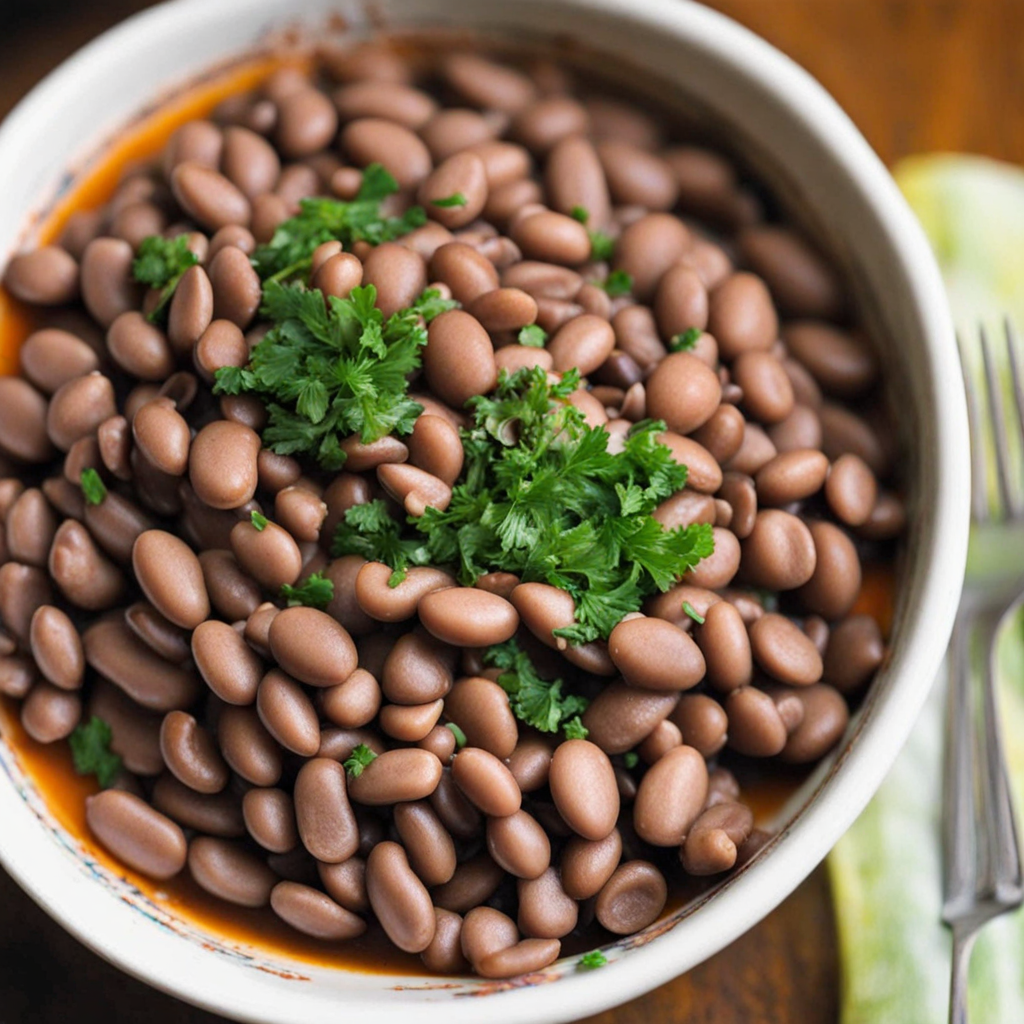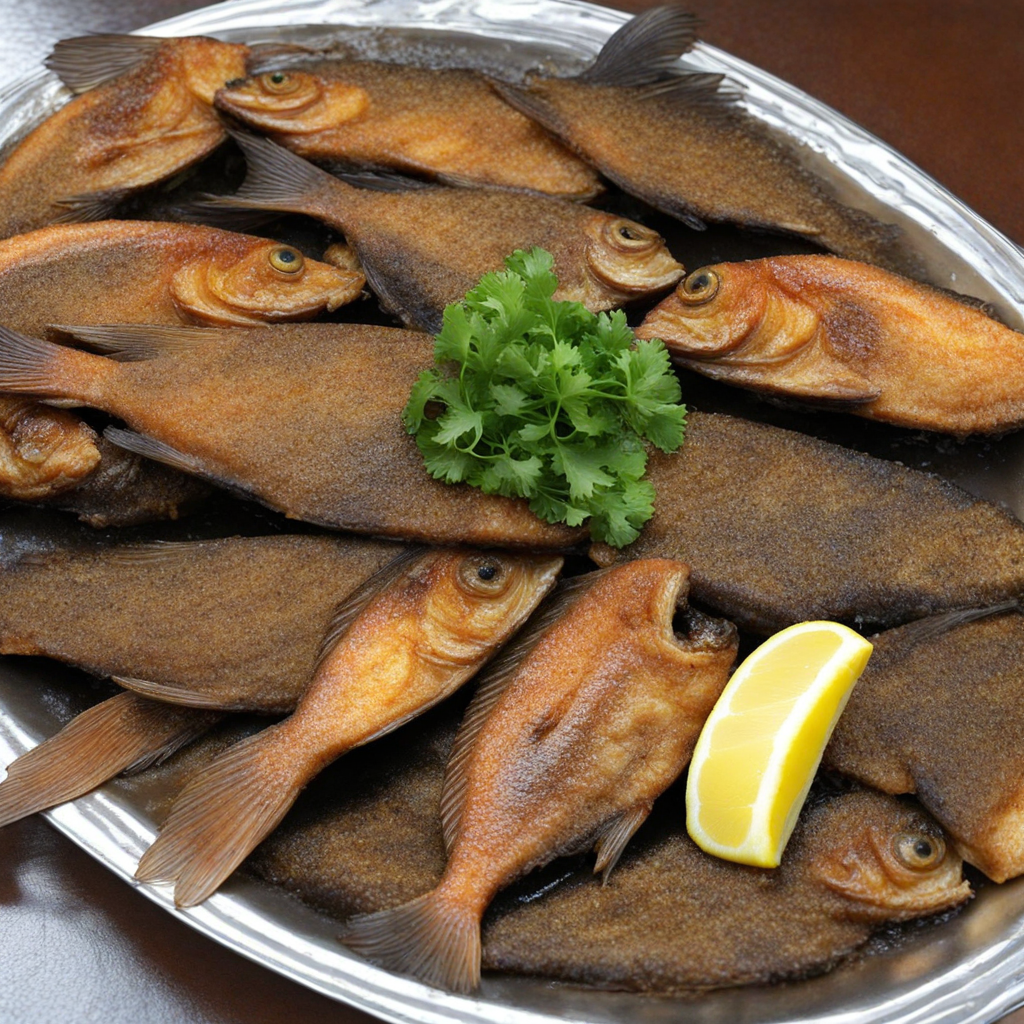Cassava Leaves
Cassava leaves, known locally as 'plasa' in Sierra Leone, are a staple ingredient in West African cuisine, particularly celebrated for their rich and earthy flavor. These leaves come from the cassava plant, which is also renowned for its starchy tubers. When prepared properly, cassava leaves offer a tender texture and a slightly nutty taste that pairs beautifully with a variety of other ingredients. Traditionally, the leaves are harvested, washed, and then pounded or chopped finely before being cooked to soften their fibrous nature. This preparation allows the natural flavors to meld together, creating a dish that is both hearty and satisfying. The leaves are often cooked in a sauce that may include palm oil, ground peanuts, or various spices, adding layers of richness and complexity to the dish. They can be combined with fish, meat, or simply enjoyed as a vegetarian option, making them versatile in the kitchen. In Sierra Leone, cassava leaves are typically served with rice, fufu, or cassava itself, providing a plant-based protein source that complements the starchy accompaniments. The resulting meal is not only delicious but also nourishing, reflecting the agricultural bounty of the region. Exploring cassava leaves opens up a world of West African culinary traditions, where communal meals and shared experiences are central to dining. The vibrant green color of the cooked leaves is visually appealing, and the aroma that wafts from the pot during cooking is an enticing invitation to savor the dish. Whether you enjoy them as part of a traditional feast or as a new addition to your home cooking repertoire, cassava leaves promise a unique taste experience that captures the essence of Sierra Leonean culture.
How It Became This Dish
The History of Plasas: A Culinary Treasure of Sierra Leone #### Origins Plasas, a beloved dish in Sierra Leone, is a vibrant and flavorful representation of the country's culinary heritage. The word 'plasa' originates from the Temne language, one of the major ethnic groups in Sierra Leone, where it generally refers to a sauce or stew served alongside rice. The dish is deeply rooted in the agricultural practices and the diverse cultures of Sierra Leone, reflecting the country’s history and the influences of various ethnic groups, including the Temne, Mende, and Limba. Historically, Sierra Leone’s geographic location along the West African coast fostered trade and cultural exchange. As a result, the culinary practices of the region were influenced by various groups, including the Portuguese, British, and other West African cultures. The introduction of new ingredients, such as tomatoes and peppers, reshaped traditional cooking methods and flavors. Plasas, as a dish, symbolizes this hybridization of influences, incorporating local ingredients like cassava leaves, sweet potatoes, and groundnuts (peanuts), which are staples in the Sierra Leonean diet. #### Ingredients and Preparation The core of plasas is its rich sauce, typically made from leafy greens, most commonly cassava leaves, which are known for their nutritional value and robust flavor. Other variations may include spinach, pumpkin leaves, or even okra, depending on regional preferences and availability. Beyond the greens, plasas is enriched with ingredients such as palm oil, which imparts a distinctive taste and color, and a variety of seasonings, including ground crayfish, spices, and sometimes meat or fish to add depth. The preparation of plasas is often a communal affair, reflecting the strong sense of community within Sierra Leone. Families and friends gather to prepare the dish, showcasing the importance of social bonds in Sierra Leonean culture. Traditionally, plasas is served with rice, which acts as a neutral base to balance the richness of the sauce. This combination not only nourishes the body but also fosters a sense of togetherness, as meals are often shared among family members or during community gatherings. #### Cultural Significance Plasas is more than just a meal; it holds significant cultural importance in Sierra Leone. Food in Sierra Leone, as in many cultures, is a marker of identity and tradition. Plasas is often prepared during important celebrations, such as weddings, festivals, and religious ceremonies. Its presence on the table during these occasions signifies abundance and hospitality, as offering food to guests is a gesture of goodwill. Moreover, plasas has become a symbol of resilience and survival among Sierra Leoneans. During the civil war that devastated the country from 1991 to 2002, many families had to adapt their culinary practices due to scarcity of ingredients. Despite these hardships, the tradition of making plasas continued, serving as a reminder of home and heritage. Today, plasas is not only cherished within Sierra Leone but has also gained recognition among the diaspora, who seek to preserve their culinary traditions abroad. #### Development Over Time As Sierra Leone has evolved, so too has the dish of plasas. In the post-war era, the country saw a resurgence in pride for its culinary heritage. Many chefs and home cooks began to explore traditional recipes, infusing them with modern techniques and presentations. This evolution has sparked a renewed interest in Sierra Leonean cuisine, leading to the establishment of restaurants that specialize in traditional dishes, including plasas. In recent years, food festivals and cultural events have showcased plasas and other traditional dishes, introducing them to a wider audience both locally and internationally. These events celebrate Sierra Leonean culture and heritage, allowing the younger generation to connect with their roots through food. Initiatives aimed at promoting local ingredients have also emerged, encouraging sustainable practices and supporting local farmers. Moreover, the diaspora has played a crucial role in the development of plasas. As Sierra Leoneans migrate around the world, they take their culinary traditions with them, adapting recipes to include available ingredients while preserving the essence of the dish. This has led to the emergence of different interpretations of plasas, influenced by the local cuisines of their new homes, while still honoring the traditional roots. #### Conclusion Plasas is a dish that embodies the rich tapestry of Sierra Leonean culture and history. Its origins are deeply intertwined with the agricultural practices and diverse ethnic groups of the region, while its preparation reflects the communal spirit that is central to Sierra Leonean society. The dish has evolved over time, adapting to challenges and celebrating cultural heritage, making it a symbol of resilience and identity. As Sierra Leone continues to grow and change, plasas remains a beloved staple, connecting past and present, and serving as a reminder of the importance of community and tradition in the face of adversity. Whether enjoyed at a family gathering, a festive occasion, or in a restaurant, plasas not only nourishes the body but also nourishes the spirit, keeping alive the rich culinary heritage of Sierra Leone for generations to come.
You may like
Discover local flavors from Sierra Leone







